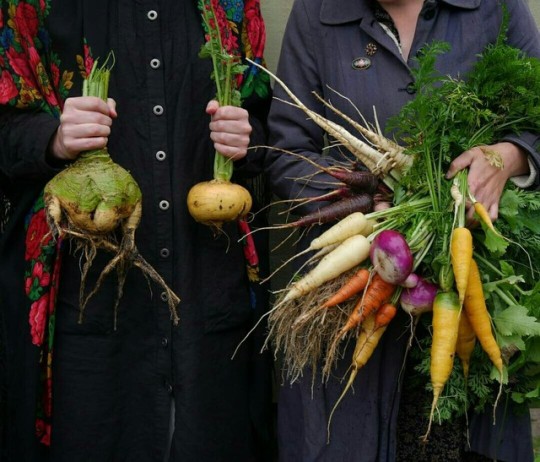Don't wanna be here? Send us removal request.
Text

Pretty day at Fernan Lake - thanksgiving 2021
33 notes
·
View notes
Text
“It was much better to imagine men in some smokey room somewhere, made mad and cynical by privilege and power, plotting over brandy. You had to cling to this sort of image, because if you didn’t then you might have to face the fact that bad things happened because ordinary people, the kind who brushed the dog and told the children bed time stories, were capable of then going out and doing horrible things to other ordinary people. It was so much easier to blame it on Them. It was bleakly depressing to think that They were Us. If it was Them, then nothing was anyone’s fault. If it was Us, then what did that make Me? After all, I’m one of Us. I must be. I’ve certainly never thought of myself as one of Them. No one ever thinks of themselves as one of Them. We’re always one of Us. It’s Them that do the bad things.” - Terry Pratchett, Jingo
3K notes
·
View notes
Photo

American House, Ghost Town, Colorado, 1931
Paul Strand
123 notes
·
View notes
Photo

On 20 November 1969, nearly 80 Native Americans landed on the abandoned Alacatraz Island and, citing the 1851 Treaty of Fort Laramie, reclaimed it as their own.
Organized by Richard Oakes, a Mohawk from New York State, the Indians of All Tribes group included occupiers from more than 20 tribes. They invited the federal government to join them in formal negotiations. The government immediately demanded that the occupiers leave, and set up a Coast Guard blockade to prevent supplies from reaching them. The government then switched to a strategy of non-interference, hoping that the occupation would collapse on its own.
The occupation would continue for 18 months.
The occupation was widely covered by the media, and generated broad popular interest in the grievances the occupiers were expressing — broken treaties, broken promises and the erasure of their culture. Demonstrations and occupations popped up around the country in solidarity.
More than 400 people attended the observance of Thanksgiving on 27 November 1969.
Oakes left the occupation in January 1970 after his 13-year-old daughter died from an accidental fall. While factions developed to control the remaining occupiers, the popularity of the movement saw the introduction of non-Native Americans onto the island, including drug addicts and drug dealers.
In May 1971, the government cut electricity and telephone service on the island, and in early June, a fire broke out, destroying several buildings. The government blamed the occupiers for the fire, and the occupiers suspected government infiltrators. The number of protesters dwindled after the fire.
On 11 June 1971, President Nixon ordered federal marshals to remove the final 15 occupiers.
As a direct result of the occupation, laws were passed to support Native American self-determination, health and education. Some tribal lands were returned (e.g. Mount Adams in Washington and 48,000 acres around Blue Lake in New Mexico).
Many of the veterans of the Alcatraz occupation continued their activism and participated in further demonstrations, including the 1972 takeover of the Bureau of Indian Affairs headquarters and the Wounded Knee occupation in 1973.
146 notes
·
View notes
Photo

Coleman Hawkins, November 21, 1904 – May 19, 1969.
With Billie Holiday.
72 notes
·
View notes
Photo





Still Life paintings by Durdy Bayramov (Turkmen, 1938 - 2014)
Durdy Bayramov was an academic and artist who was awarded the highest honorary title in his country: “People’s Artist of Turkmenistan”.
The depiction of fruit in Bayramov’s still lifes symbolizes the bounty of nature and his love for his native land’s fruit in particular. He often depicted fruit arranged on traditional Turkmen carpets, which feature gol woven motifs and vibrant colors, and on Turkmen ornamental felt called keche. Bayramov was also passionate about painting flowers, particularly red poppies that brighten the foothills of Turkmenistan every spring are featured in many of his paintings. Bayramov’s belief that “nature is our sanctuary” is illustrated in his landscapes.
646 notes
·
View notes
Photo

Syed Haider Raza (1922 - 2016) - Tree. 2004. Oil on canvas.
72 notes
·
View notes
Text
"be gay. do content."
“Tumblr is a bad platform for content creators” frankly, content around here isn’t so much created as perpetrated. We commit content.
38K notes
·
View notes
Photo

https://www.tumblr.com/blog/view/edwordsmyth/650374343608647680
Moki Cherry, Untitled, 1967.
24 notes
·
View notes
Text
Honestly the queue and schedule post options on Tumblr are extremely underrated. No other major social networking site has the ability to do that with the same ease as Tumblr does, and we've had them for like a decade now. They're fantastic features and Tumblr doesn't get enough credit for having them.
136K notes
·
View notes
Photo

’“Flowers [in Kanji]” 1989
Yayoi Kusama
308 notes
·
View notes






